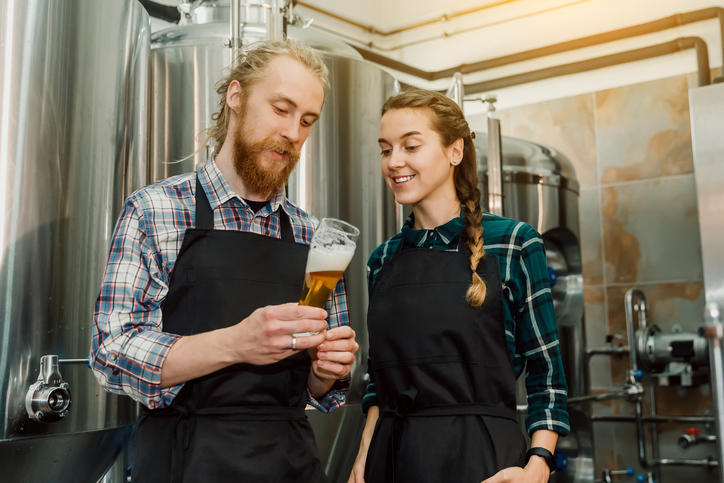The Research & Development (R&D) Tax Credit has been around since 1981, but don’t let this one’s age fool you. The legislation behind the credit has evolved over the years, making it the largest tax credit now available to U.S. businesses.
This government-sponsored tax credit’s original purpose was to keep technical jobs in the U.S. and to encourage national innovation. The U.S. Government recognized that research and development is inherently risky. Businesses rapidly accrue costs and consume time and resources with no guarantee of an ultimate reward. To stay in line with the global competition, the credit was established, in its original form, as temporary legislation. Numerous revisions have occurred over the years, most notably, the PATH Act, signed into law in 2015, making the R&D Tax Credit permanent and bringing about changes that can substantially lower your brewery’s tax liability.
As you may know, research and development isn’t conducted exclusively in large, clinical labs; it’s part of daily operations and, since the PATH Act, applies to businesses of all sizes, including startups. As a brewery, you probably aren’t making a single product with the same method or process year after year. You’re evolving and improving your products and processes to effectively meet your business needs and customer wants (or maybe demands). Quite often, the developments and enhancements you make in your business are being overlooked at tax time – for current and prior years. And the savings overlooked aren’t just on the federal level. Currently, most states offer R&D tax credit incentives, including Maine and Massachusetts.
What qualifies?
So, what kind of brewery innovation is considered a Qualified Research Activity (QRA)? Generally speaking, just doing what you do! Improvements to hopping, yeast strains, and fermentation processes, for starters. Improvements or developments for product formulation, filtration methods, flavor and aroma profiles, prototype batches, and bottling and canning processes count too. Green initiatives go a long way, such as water recycling and waste management improvements, as well as ecological packaging. The list is extensive, and it’s likely much more inclusive than you think.
There are, of course, specific requirements for eligibility. To qualify, the innovation must also rely on a hard science (such as engineering, computer science, biology, or physical science) and include testing and evaluation procedures, meaning things like market research, surveys, and routine quality control aren’t considered QRAs. Keep in mind, however, that developing a new or improved quality assurance process IS a QRA. The line can be blurry, which is how so many businesses are missing tax credit opportunities.
In order to quantify the expenses for these innovations, the tax law contains standards for determining Qualified Research Expenses (QREs), which include both “in-house” research expenses and contract research expenses. In-house research expenses generally include wages paid to employees who perform qualifying services and amounts paid for supplies used in conducting qualified research. In all likelihood, the activities of a Brewmaster would qualify and meet the “substantial all” provision; therefore, their wages would be considered a qualified research expense. Contract research expenses include amounts paid to third parties for specific research and development activities such as hired consultants that will help develop or improve a product or process through discovery and experimentation.
Additional Benefits for Small Businesses
The PATH Act brought about new tax credit opportunities for small businesses, beginning January 1, 2016, which can eliminate your taxes, dollar for dollar. This legislation breaks down small businesses into two categories: Eligible Small Businesses (ESBs) and Qualified Small Businesses (QSBs).
An ESB is a corporation that is not publicly traded, a partnership, or a sole proprietorship with average annual gross receipts not exceeding $50M for the past three taxable years. Businesses in this group have the added benefit of using the R&D Tax Credit to offset Alternative Minimum Tax (AMT). It also allows for a three-year lookback, giving businesses the opportunity to claim the R&D Credit for the past three taxable years, in addition to the current tax year. A QSB is a business with less than $5M in annual gross receipts and having gross receipts for no more than five years. QSBs can use the R&D Tax Credit to offset the FICA employer portion of their payroll taxes.
The tax savings from properly recognizing and reporting your brewery’s QRAs can be quite substantial, leading to increased profitability and efficiency. Having an industry-savvy team on your side is critical. The R&D Tax Credit can mean a difference in hundreds of thousands in savings for larger breweries, and certainly not just pocket change in the small business arena.
ARB’s Craft Beverage Services Group specializes in helping breweries grow and thrive. Contact us to discover how your brewery can take advantage of the R&D Tax Credit opportunities, or for any other tax, accounting, or business advisory needs.
by Holly D. Ferguson, Principal, CPA





